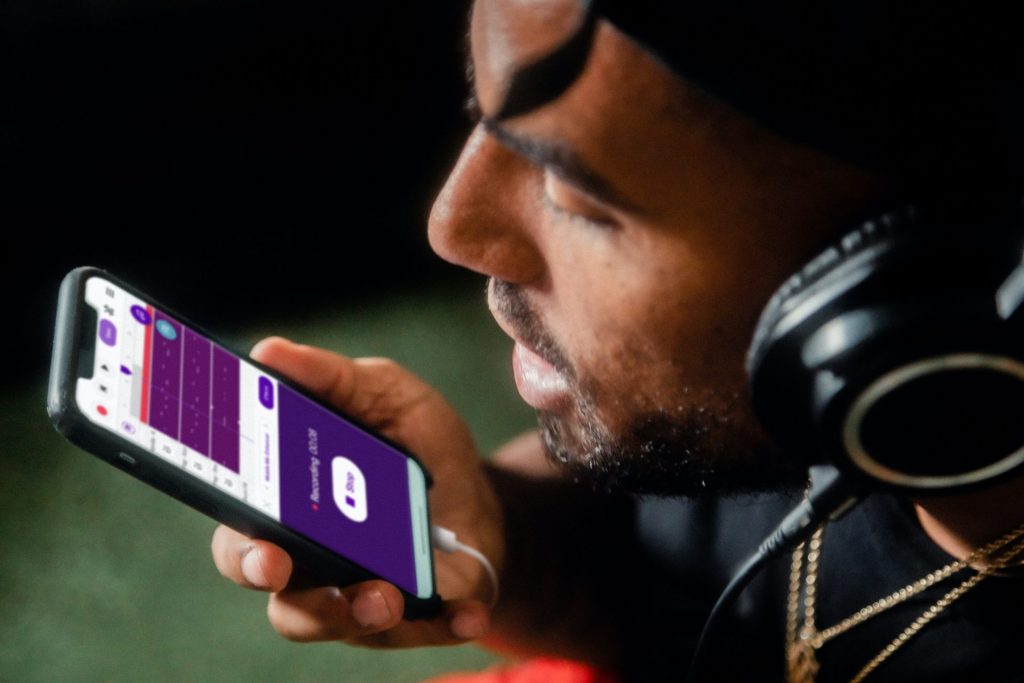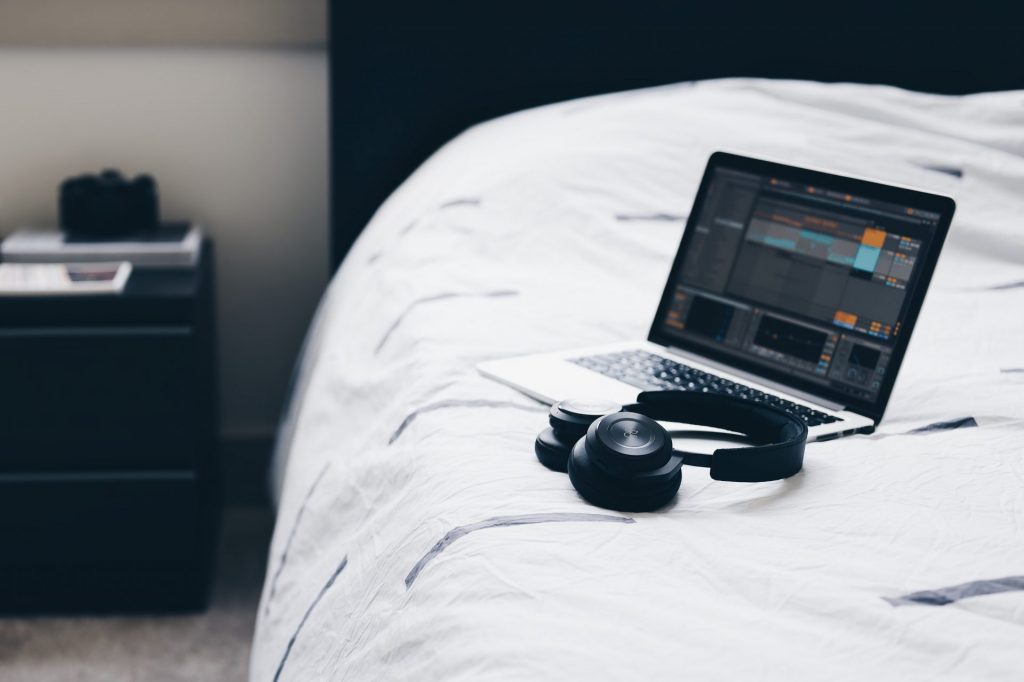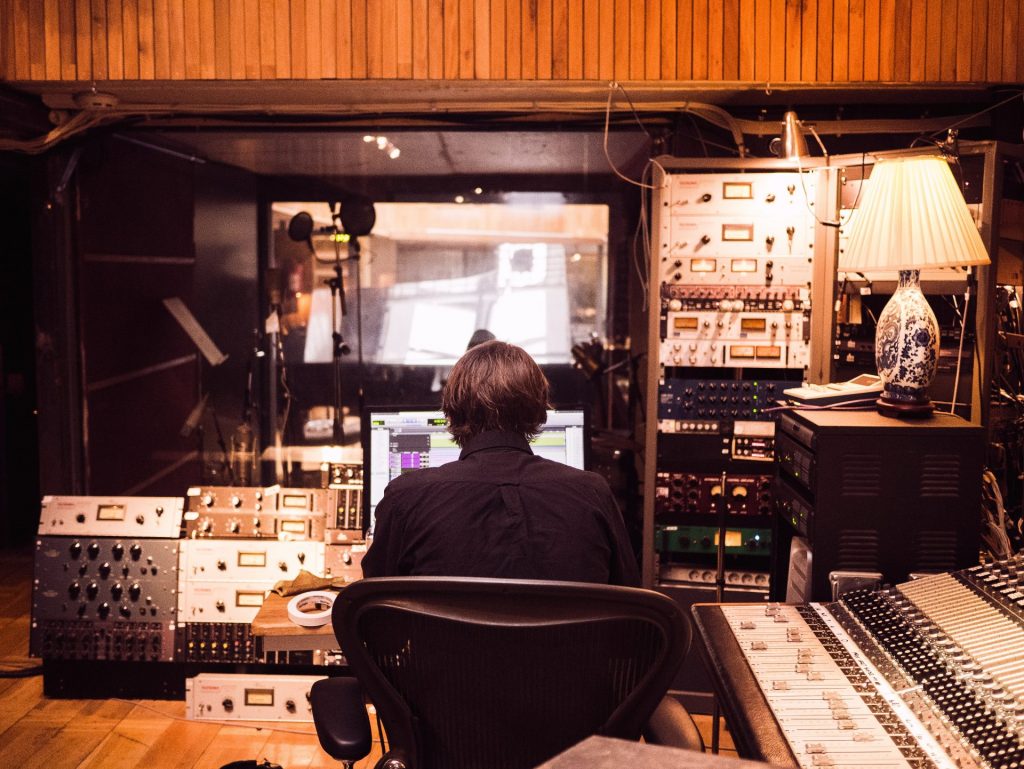
With today’s technology, you can make music with just about anyone around the world so long as you have access to the internet. While remote music collaboration comes with a bunch of exciting possibilities, it also comes with its own set of challenges.
Luckily, we’ll share some of the most important remote collaboration tips below so that you can build bangers from afar. Let’s dive in!

10 Strategies For Remote Music-Making
Are you ready to start making music remotely? Here are ten essential strategies to ensure your experience is as smooth as possible.
1. Make Sure You’re a Good Match
Music collaborations can be a great way to expand your skill set and cross-pollinate your respective audiences. However, if it isn’t a good match, making a collab track can feel incredibly arduous and reflect poorly on your artist project. It’s a good idea to seek out someone with a similar but different sound who’s willing to put in the same amount of work as you.
2. Determine Splits Upfront
It isn’t the most exciting conversation, but determining your splits, or how much royalties each artist will earn from a song, is key before you start building the track. Get something down in writing and have each artist sign off on their role and expected royalty split. This formality is essential for every artist and will help your collaborators develop a clearer understanding of their roles within this project.
3. Agree On a Timeline
It’s too easy to give up on a song due to negligence or poor planning. Create a manageable schedule that works for everyone surrounding your production progress. For instance, by X date the vocals are done, and by X date the final mix is ready to be mastered. This can change as the project goes on, but building a timeline upfront will help keep everyone on track.
4. Choose Your Process Wisely
There are multiple ways to collaborate remotely with other musicians. It’s up to you and your collaborators to pick what works best for you. You could send files back and forth via Google Drive, use remote collaboration plugins like Satellite Sessions or Audiomovers, or build your beats over Zoom. Make sure you pick a process that works for all of your artists.

5. Be Accountable
Keep your word and stick to the timeline that you agreed upon. There’s nothing worse than a musician who ghosts you after you’ve already put so much time, effort, and energy into a track. If you can’t meet a deadline for whatever reason, let your collaborator know and provide an updated turnover date.
6. Stay Organized
Professional musicians label their files, folders, and keep their collaborators posted on BPM and key changes. Be sure to stay as organized as possible when passing around files. It’s also a good idea to upload each session to an external drive or storage cloud so that you can refer back for future use.
7. Export Wet and Dry Stems
In addition to keeping your stems properly organized, be sure to send over both wet and dry stems to your collaborator. This way, they are free to play with different processing methods and won’t have to bug you for extra exports. Your stems should be exported at a level that’s low enough so that everything doesn’t peak when dragged into a new DAW.
8. Be Honest
All collaborations are built upon effective communication. If you’re not a fan of an idea, speak up. There’s still a way to do so diplomatically, but definitely make sure your voice is heard. Even if it’s uncomfortable at the moment, you don’t want to resent other musicians or your art down the line. Collab tracks are still a direct reflection of who you are and what you sound like as an artist. If a song strays too far from your general artistic vision, it may confuse your fans.
9. Keep An Open Mind
In some sessions, you’ll be on the exact same wavelength as your collaborator. In others, you won’t. Try to keep an open mind and genuinely consider your collaborators’ ideas. If you’re having a difference of opinion, you can always save different versions of the track to circle back to later.
10. Don’t Forget About Marketing Labor
Remember that the work doesn’t stop once you’ve finished your collab track. If you plan on distributing your track professionally, you’ll need to work out a release strategy with your collaborators. Who is building the visuals? Who is in charge of creating the social content? Marketing your music should be an even division of labor as much as possible.

Remote music making can take some getting used to, but ultimately it’s an amazing way to connect with other collaborators from across the globe. Hopefully, this guide makes it easier for you to build beats with your favorite musicians from anywhere and everywhere!

